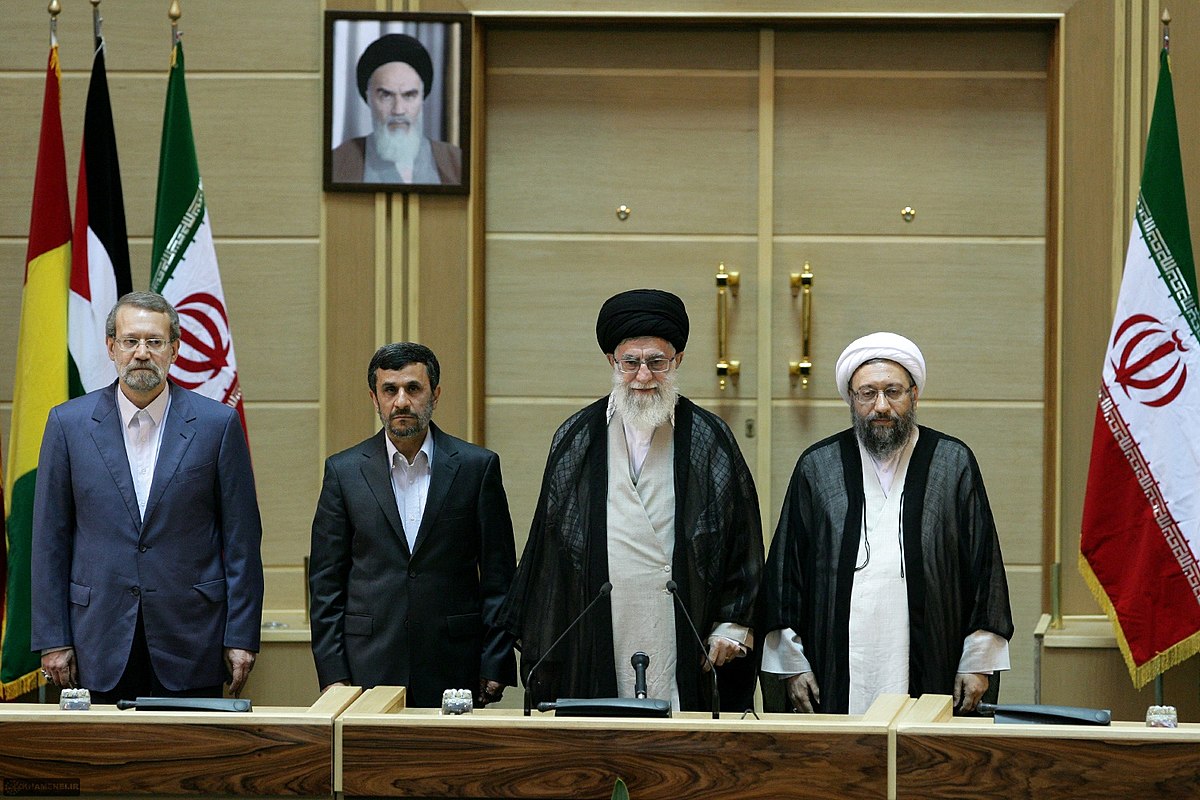
Iran under Mahmoud Ahmadinejad
IranMahmoud Ahmadinejad, elected as Iran's president in 2005 and re-elected in 2009, was known for his conservative populist stance. He promised to combat corruption, advocate for the poor, and strengthen national security. In the 2005 election, he defeated former President Rafsanjani significantly, attributed to his economic promises and lower reformist voter turnout. This victory consolidated conservative control over the Iranian government.[126]
Ahmadinejad's presidency was marked by controversy, including his vocal opposition to American policies and his contentious remarks about Israel.[127] His economic policies, such as providing cheap loans and subsidies, were blamed for high unemployment and inflation.[128] His 2009 re-election faced significant dispute, sparking large protests described as the greatest domestic challenge to Iran's leadership in three decades.[129] Despite allegations of voting irregularities and ongoing protests, Supreme Leader Ali Khamenei endorsed Ahmadinejad's victory,[130] while foreign powers were blamed for inciting unrest.[131]
A rift between Ahmadinejad and Khamenei emerged, centered around Ahmadinejad's advisor, Esfandiar Rahim Mashaei, accused of leading a "deviant current" against greater clerical involvement in politics.[132] Ahmadinejad's foreign policy maintained strong ties with Syria and Hezbollah and developed new relationships with Iraq and Venezuela. His direct communications with world leaders, including a letter to George W. Bush and remarks about the absence of homosexuals in Iran, garnered significant attention.
Under Ahmadinejad, Iran's nuclear program led to international scrutiny and accusations of non-compliance with the Nuclear Nonproliferation Treaty. Despite Iran's insistence on peaceful intentions, the IAEA and international community expressed concerns, and Iran agreed to tougher inspections in 2013.[133] During his tenure, several Iranian nuclear scientists were assassinated.[134]
Economically, Ahmadinejad's policies were initially supported by high oil revenues, which declined with the 2008 financial crisis.[128] In 2006, Iranian economists criticized his economic interventions, and his decision to dissolve the Management and Planning Organisation of Iran in 2007 was seen as a move to implement more populist policies.
Human rights under Ahmadinejad reportedly deteriorated, with increased executions and crackdowns on civil liberties, including dress codes and restrictions on dog ownership.[135] Controversial proposals, such as promoting polygamy and taxing Mahriyeh, did not materialize.[136] The 2009 election protests led to widespread arrests and deaths, but a September 2009 poll suggested high levels of satisfaction with the regime among Iranians.[137]
